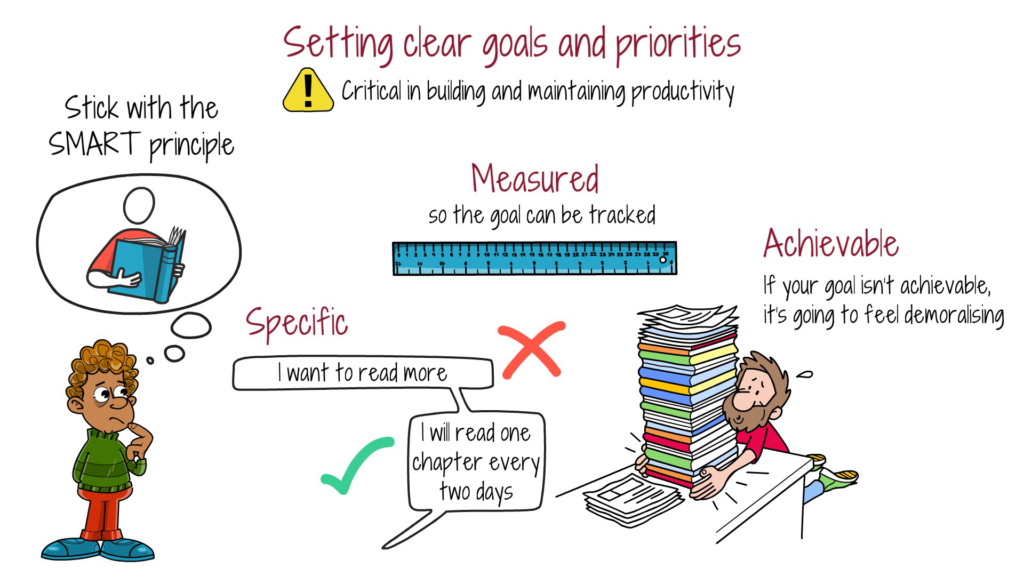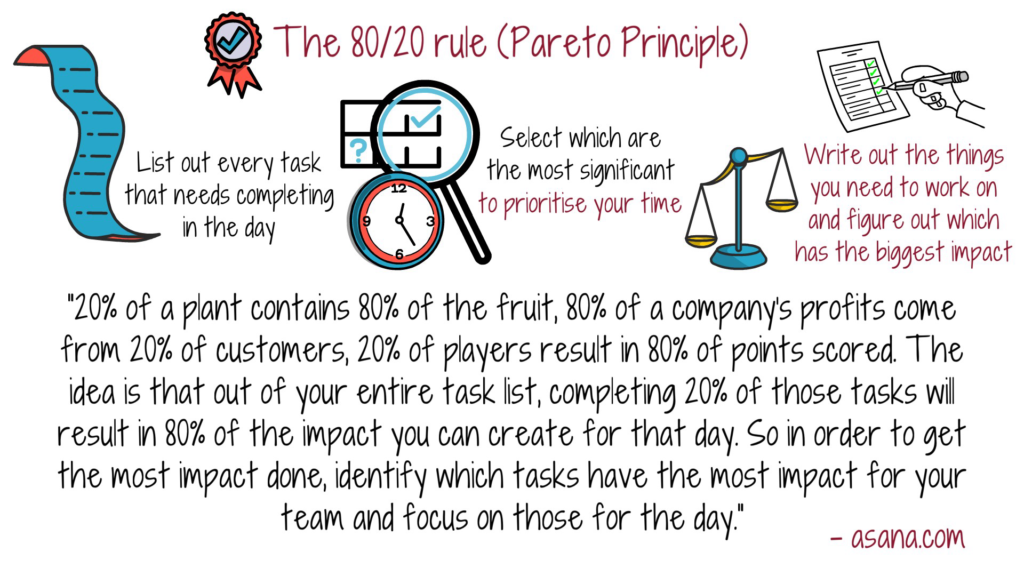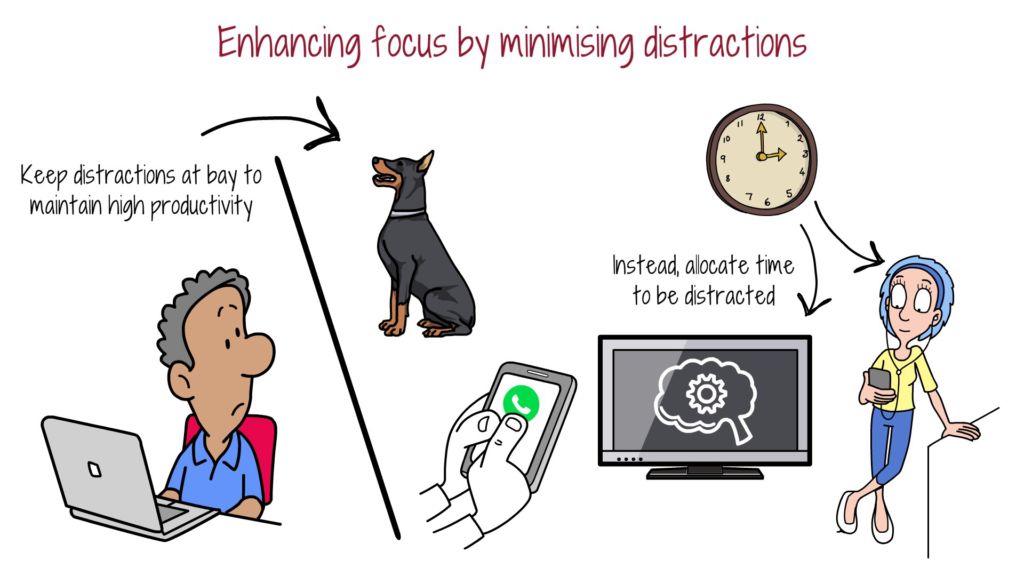Productivity guides are a hot commodity. If you’re a productive worker, you’ll likely get commended. After all, the more work you produce, the more valuable you are, right? While that may be true in a lot of ways, productivity isn’t just for business purposes. A productive person isn’t merely the employee of the month, they’re productive in every sense of the word. A productive friend shows up when needed. A productive partner listens and plans dates. A productive person looks out for themselves and ensures they’re not slacking when it comes to self-care.
Yes, a lack of productivity in a work environment is not a favourable position to be in. Looking further, if you’re not actively working to improve your life, whether that’s via self-betterment or relationships, it can lead to a lack of self-esteem and dwindling confidence. These traits help make productivity a formidable yet sustainable presence in your life, so their absence is potentially very damaging in any pursuit of a long-term goal.
To ensure productivity remains a constant in your life, you need simple but clearly defined techniques. Think of them as checkpoints – reminders, perhaps – that provide a sense of achievement and clarity for continued, productive success moving forward.
Setting clear goals and priorities
From the outset, the manner in which you set your goals and priorities is critical in building and maintaining productivity. To ensure you’re operating in alignment with what’s best for you, stick with the S.M.A.R.T. principle for goal setting. You may be familiar with it but for those that aren’t, here’s a quick rundown using the example of wanting to read more.


- Specific: “I want to read more” is a worthwhile goal, but it certainly isn’t specific enough. Without specificity, the goal can feel endless. Try “I will read one chapter every two days” to start.
- Measured: A goal needs to be measured so it can be tracked. If you are unable to track progress it is easy to become disillusioned with the goal at hand. In this instance, a good measure is how many pages or chapters you’ve read. This data can be reviewed and any goal adjusted accordingly.
- Achievable: Fairly self-explanatory – if your goal isn’t clearly achievable, then it’s going to feel increasingly demoralising. In this instance, “I want to read three books in the next 12 months” is a much more achievable target.
- Relevant: The goal you set should match your values and desired life trajectory.
- Time-Bound: As mentioned previously, providing a time frame for your goal helps keep you grounded and aligned with your targets.
S.M.A.R.T. goals will help steer you towards a more productive place because they are a focused, measured way of keeping you on track. When everything is aligned correctly, it becomes much easier to go after life and get things done.
Time management techniques
Once you’ve set the right-minded goals, it’s time to go after them. How do you do that, exactly? Well, it all starts with time-management techniques. After all, the most productive people are able to categorise and maximise every task and minute they have on any given day. When you know how your time will be filled, it’s easier to focus. Think of it as streamlining your computer – the more tabs you have open, the slower it will operate. Focused time will free up space for maximum efficiency. So, without further ado, let us begin.

Eisenhower Matrix
One popular one is the Eisenhower Matrix. Coined by Dwight D. Eisenhower, rest assured this system has been tried and tested. As a 5-star general spearheading the Allied forces in World War 2 and later as President, Eisenhower didn’t have any time to waste. To manage his life as efficiently as possible, he split his tasks into four:
- Urgent and important (tasks you will do immediately)
- Important, but not urgent (tasks you will schedule to do later)
- Urgent, but not important (tasks you will delegate to someone else)
- Neither urgent nor important (tasks that you will eliminate).

If you want to make it a little simpler, try splitting your tasks into three sections: must-do, should-do, and bonuses. It’s all about prioritising your time for optimal productivity. Essentially, cut out the time and mental energy it takes to switch between states of being.
80/20 rule (Pareto Principle)
The 80/20 rule, otherwise known as the Pareto Principle, is one of the most popular time-management techniques. Asana helps explain what it means:
“20% of a plant contains 80% of the fruit, 80% of a company’s profits come from 20% of customers, 20% of players result in 80% of points scored. The idea is that out of your entire task list, completing 20% of those tasks will result in 80% of the impact you can create for that day. So in order to get the most impact done, identify which tasks have the most impact for your team and focus on those for the day.”

In your everyday life, try listing out every task that needs completing in a single day and select which of those is the most significant (has the most impact). As is the theme here, doing this enables you to adequately prioritise your time.
As mentioned earlier in this article, productivity doesn’t just revolve around your work. If you’re looking to productively improve yourself or your relationships, the Pareto Principle can still be applied. Simply write out the things you need to work on and figure out which has the biggest impact. Sometimes the smallest tasks have the most significant ripples in your life, so just because it won’t take a lot of effort, don’t disregard it. Productivity is all about efficiency, after all.
Building effective systems & routines to boost productivity
Us human beings crave routine. It centres us and enables us to build healthy habits, lower stress, feel in control and improve confidence.

Productivity is destabilised when we are. If you don’t have a morning routine, for example, it’s easy for things to go wrong. You’re left wasting time with decisions that a routine makes for you, such as what to eat, your commute, or what to wear. Pre-determining those factors saves physical and mental energy which can be funnelled into whatever you need to do the next day.
A productive person is an organised one. Making healthy choices for your future self will not only maximise your time but encourage gratitude between the different versions of yourself. For instance, if you lay out your clothes and make your lunch the night before, your future self will look back on your current self with admiration and will want to continue that feeling moving forward.
Enhancing focus by minimising distractions
What is the number one killer of focus? Yes, it’s a distraction. You could be settling into a groove, 500 words deep, when the neighbour’s dog starts incessantly barking, or your phone buzzes with an exciting new notification. In our increasingly plugged-in society, distractions are never far away. Keeping them at bay is critical to maintaining a high level of productivity.

Of course, it’s almost inevitable you’ll succumb at some point. Completely shutting distractions out of your life is not sustainable, so instead of blocking everything forever, allocate time to be distracted. Select a time – a break perhaps – when you purposefully go on your phone or watch TV. This enables you to pivot 100% of your time toward a productive outcome as you’re giving some direction and purpose to typically time-consuming and work-eating activities. As a result, you don’t need to constantly switch back into a productive brain – the whole process is productive instead.
While this article covers essential aspects of productivity, our extensive Productivity & Time Management Guide offers further insights and actionable steps.
It’s all about building productivity-based, healthy habits
To build a productive life, you must first build a productive brain. That starts when you focus on a few things, as this video has explained. If you take anything away from this article, let it be this: productivity will come naturally when you focus on your goals and time management.

Goal setting provides a destination. Time management is the roadmap.
As touched on earlier, productivity is typically associated with the workplace. Looking at it in a broader sense, however, is important to remember. When you strive to be a productive person in every sense of the word, rest assured the results will come flooding in. The key is to ensure you’re not wasting any time with poor decisions and ill-fated means.
Remember, a productive person puts their future self first.
